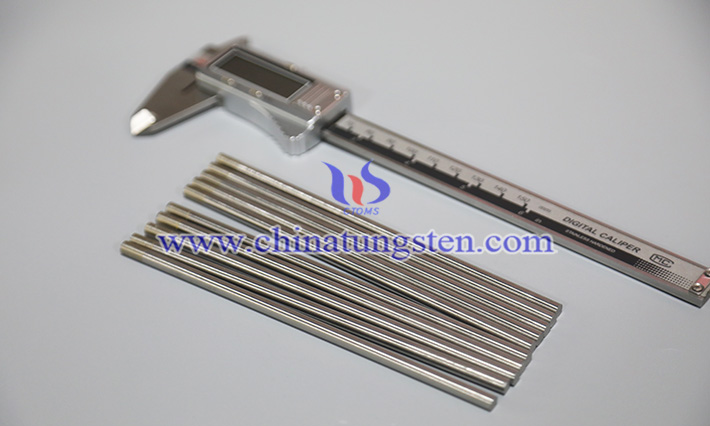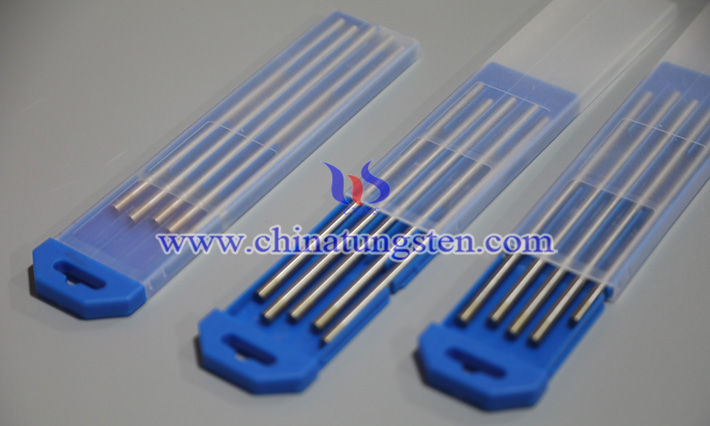What Is the Conductivity of Lanthanum Tungsten Electrode?
- Details
- Category: Tungsten Information
- Published on Wednesday, 30 July 2025 16:30
In TIG (Tungsten Inert Gas Arc Welding), plasma arc welding and some electronic discharge machining (EDM), the conductivity of the electrode is directly related to arc stability, energy transfer efficiency and welding quality.
As traditional radioactive thorium electrodes are gradually eliminated, lanthanum tungsten electrodes have become an important alternative material in the field of modern welding due to their excellent conductivity, safety and environmental protection. So, as a rare earth doped tungsten-based alloy, what is its conductivity? What are its performances in practical applications?
1. Material structure gives excellent conductivity
Lanthanum tungsten electrode is a composite material made by uniformly mixing and sintering high-purity tungsten powder and 1.0% to 2.0% lanthanum oxide (La₂O₃). Tungsten itself is a metal with extremely high melting point, high electron density and excellent conductivity, and its resistivity is about 5.6×10⁻⁸ Ω·m. After adding a small amount of lanthanum oxide, the grain structure is further optimized due to the formation of fine and evenly distributed rare earth oxide particles. These particles can not only stabilize the grain boundaries and inhibit grain growth, but also enhance the continuity of the current-carrying channel, thereby maintaining good electron migration ability.
At the same time, lanthanum oxide has a lower work function, which makes it easier for hot electrons to escape from the surface and enter the arc channel at high temperatures, effectively reducing the arc voltage starting threshold. This not only helps to improve the arc starting performance, but also reflects the overall efficient conductive properties of the material.
2. Strong conductive stability, adaptable to a wide current range
Lanthanum tungsten electrodes are particularly stable under direct current (DC) welding conditions and are particularly suitable for low to medium-high current welding scenarios. For example, WL15 and WL20 electrodes can maintain a stable arc without tip collapse in the current range of 10A to 250A or even higher. Because its tip structure can remain intact at high temperatures, the conductive area is highly stable and the current conduction process is almost uninterrupted.

In AC welding, especially for aluminum and magnesium alloys, this material also exhibits a certain degree of conductive adaptability. Although its oxidation resistance during the anode cleaning stage is slightly lower than that of zirconium tungsten, with proper electrode grinding and welding parameter adjustment, efficient current transmission can still be maintained.
3. Comparison of conductivity with other electrode materials
Compared to pure tungsten: While pure tungsten has good conductivity, its high work function results in slow arc starting and high arc voltage during actual welding. Furthermore, the electrode is easily oxidized, indirectly affecting conductivity. Lanthanum tungsten maintains conductivity while also offering better electron emission efficiency.
Compared to thoriated tungsten: Thorium tungsten has strong conductivity and stable performance, but it has radioactivity issues, which restricts its use and transportation. Lanthanum tungsten, as its environmentally friendly alternative, has conductivity performance that is close to or even better than thoriated tungsten in some situations, especially in low-current or automatic welding environments.
Compared with zirconium tungsten: Zirconium tungsten is mainly used for AC high current welding, its conductivity is slightly inferior, and it is not as efficient as lanthanum tungsten in DC occasions.

4. The advantages of conductivity in application
Fast arc starting and concentrated arc: the conductive path is stable, so that the current is concentrated in a small area at the tip for release, the arc column is stable, and the molten pool is clear;
The electrode generates less heat and has low heat consumption: efficient conduction reduces energy loss and helps save energy and reduce consumption;
Long service life: good conductivity reduces the tip burning rate and extends the replacement cycle;
Strong adaptability: suitable for a variety of welding equipment and welding materials (carbon steel, stainless steel, copper, nickel, etc.).
- Chinatungsten Online: www.chinatungsten.com
- CTIA GROUP LTD: en.ctia.group
- Tungsten News & Price: www.ctia.com.cn
- Molybdenum News & Price: news.molybdenum.com.cn
- Tel.: 86 592 5129696; Email: sales@chinatungsten.com



 sales@chinatungsten.com
sales@chinatungsten.com